第4章
The French military balloon department gained its first experience in this field in the previous year, a balloon detachment having been dispatched to Tonkin in 1884. In both the Tonkin and Soudan campaigns, invaluable work was accomplished by the balloon sections, with the result that this aerial vehicle has come to be regarded as an indispensable military adjunct.
Indeed the activity of the German military ballooning section was directly attributable to the Anglo-French achievements therewith.
In this work, however, the British force speedily displayed its superiority and initiative. The use of compressed hydrogen was adopted, and within the course of a few years the other Powers, realising the advantages which the British department had thus obtained, decided to follow its example. The gas is stored in cylinders under a pressure varying from six to ten or more atmospheres; in other words from about 80 to 140 or more pounds per square inch. Special military wagons have been designed for the transport of these cylinders, and they are attached to the balloon train.
The balloon itself is light, and made of such materials as to reduce the weight thereof to the minimum. The British balloons are probably the smallest used by any of the Powers, but at the same time they are the most expensive. They are made of goldbeater's skin, and range in capacity from 7,000 to 10,000cubic feet, the majority being of the former capacity. The French balloon on the other hand has a capacity exceeding 18,000cubic feet, although a smaller vessel of 9,000 cubic feet capacity, known as an auxiliary, and carrying a single observer, is used.
The Germans, on the other hand, with their Teutonic love of the immense, favour far larger vessels. At the same time the military balloon section of the German Army eclipses that of any other nations is attached to the Intelligence Department, and is under the direct control of the General Staff. Balloon stations are dotted all over thecountry, including Heligoland and Kiel, while regular sections are attached to the Navy for operating captive balloons from warships. Although the Zeppelin and aeroplane forces have come to the front in Germany, and have relegated the captive balloon somewhat to the limbo of things that were, the latter section has never been disbanded; in fact, during the present campaign it has undergone a somewhat spirited revival.
The South African campaign emphasised the value of the British balloon section of the Army, and revealed services to which it was specially adapted, but which had previously more or less been ignored. The British Army possessed indifferent maps of the Orange Free State and the Transvaal. This lamentable deficiency was remedied in great measure by recourse to topographical photographs taken from the captive balloons. The guides thus obtained were found to be of extreme value.
During the early stages of the war the hydrogen was shipped in cylinders from the homeland, but subsequently a manufacturing plant of such capacity as to meet all requirements was established in South Africa. The cylinders were charged at this point and dispatched to the scene of action, so that it became unnecessary to transport the commodity from Britain. The captive balloon revealed the impregnability of Spion Kop, enabled Lord Roberts to ascertain the position of the Boer guns at the Battle of Paardeburg, and proved of invaluable assistance to the forces of General White during the siege of Ladysmith.